Yubo Zhao
Dynamic Path Navigation for Motion Agents with LLM Reasoning
Mar 10, 2025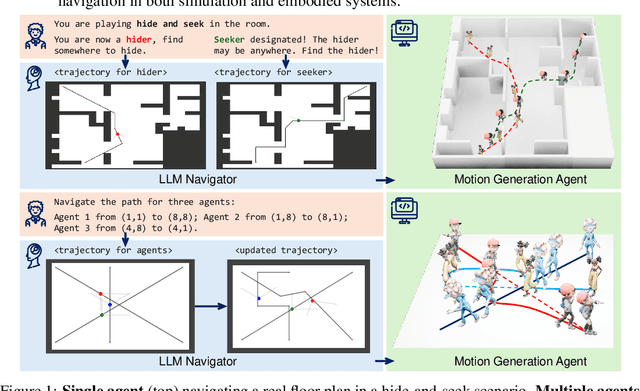
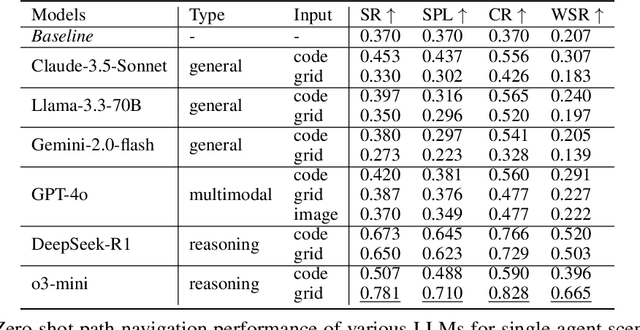
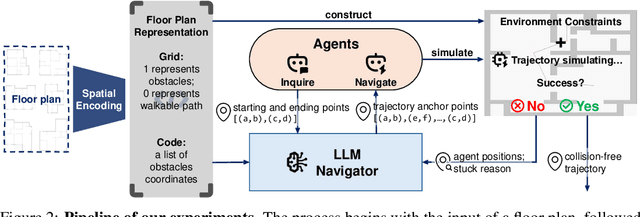
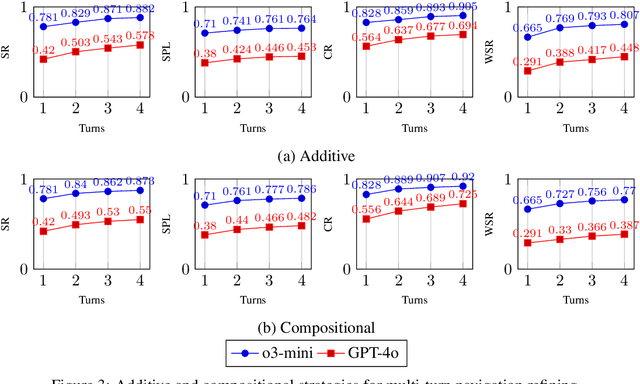
Abstract:Large Language Models (LLMs) have demonstrated strong generalizable reasoning and planning capabilities. However, their efficacies in spatial path planning and obstacle-free trajectory generation remain underexplored. Leveraging LLMs for navigation holds significant potential, given LLMs' ability to handle unseen scenarios, support user-agent interactions, and provide global control across complex systems, making them well-suited for agentic planning and humanoid motion generation. As one of the first studies in this domain, we explore the zero-shot navigation and path generation capabilities of LLMs by constructing a dataset and proposing an evaluation protocol. Specifically, we represent paths using anchor points connected by straight lines, enabling movement in various directions. This approach offers greater flexibility and practicality compared to previous methods while remaining simple and intuitive for LLMs. We demonstrate that, when tasks are well-structured in this manner, modern LLMs exhibit substantial planning proficiency in avoiding obstacles while autonomously refining navigation with the generated motion to reach the target. Further, this spatial reasoning ability of a single LLM motion agent interacting in a static environment can be seamlessly generalized in multi-motion agents coordination in dynamic environments. Unlike traditional approaches that rely on single-step planning or local policies, our training-free LLM-based method enables global, dynamic, closed-loop planning, and autonomously resolving collision issues.
MotionLLM: Multimodal Motion-Language Learning with Large Language Models
May 28, 2024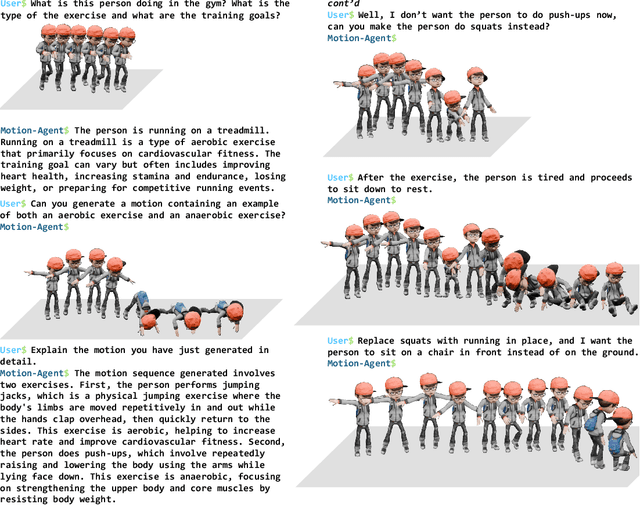

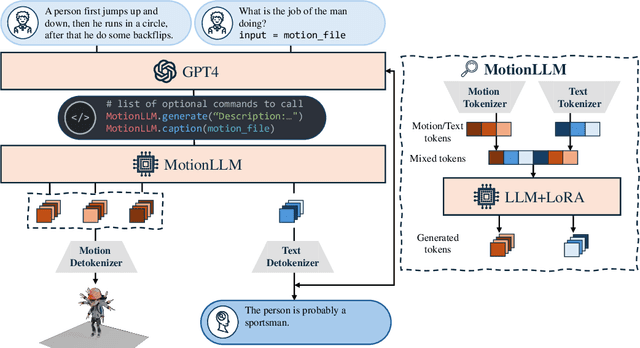
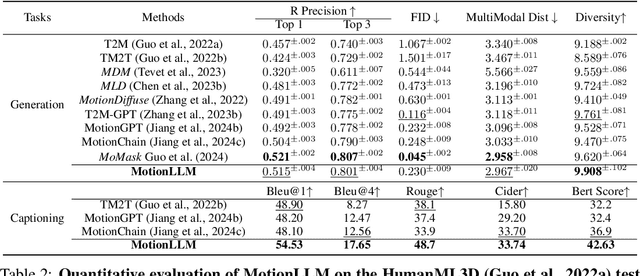
Abstract:Recent advancements in Multimodal Large Language Models (MM-LLMs) have demonstrated promising potential in terms of generalization and robustness when applied to different modalities. While previous works have already achieved 3D human motion generation using various approaches including language modeling, they mostly % are mostly carefully designed use specialized architecture and are restricted to single-human motion generation. Inspired by the success of MM-LLMs, we propose MotionLLM, a simple and general framework that can achieve single-human, multi-human motion generation, and motion captioning by fine-tuning pre-trained LLMs. Specifically, we encode and quantize motions into discrete LLM-understandable tokens, which results in a unified vocabulary consisting of both motion and text tokens. With only 1--3% parameters of the LLMs trained by using adapters, our single-human motion generation achieves comparable results to those diffusion models and other trained-from-scratch transformer-based models. Additionally, we show that our approach is scalable and flexible, allowing easy extension to multi-human motion generation through autoregressive generation of single-human motions. Project page: https://knoxzhao.github.io/MotionLLM
 Add to Chrome
Add to Chrome Add to Firefox
Add to Firefox Add to Edge
Add to Edge